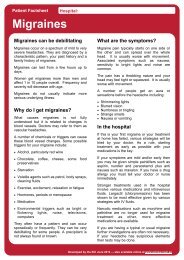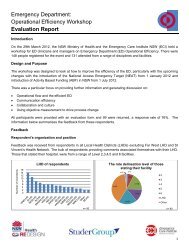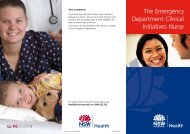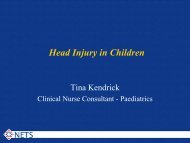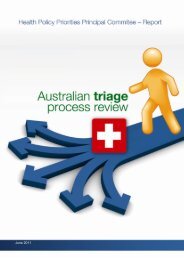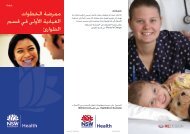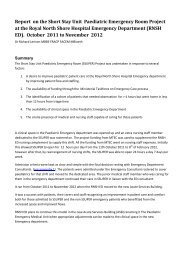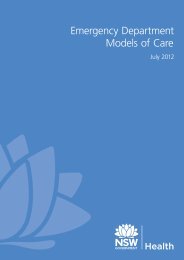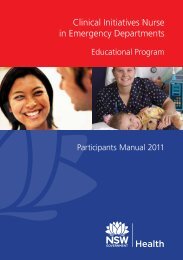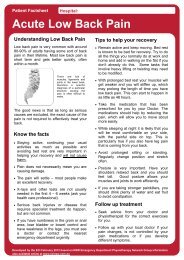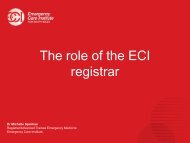Facilitators Manual - Emergency Care Institute
Facilitators Manual - Emergency Care Institute
Facilitators Manual - Emergency Care Institute
Create successful ePaper yourself
Turn your PDF publications into a flip-book with our unique Google optimized e-Paper software.
ACTIVITY 13Kussmaul respirations – rapid deep breathing characteristic of metabolic acidosis.Cheyne-Stokes respirations – alternating periods of apnoea and hyperpnoea.Hypopnoea – abnormally shallow respirations.Dyspnoea – difficulty breathing.Apnoea – cessation of breathing.Bradypnoea – abnormally slow respirations.Tachypnoea – abnormally fast respirations.Discuss responses with participant.ACTIVITY 14Review respiratory assessment in a relevant text and breath sounds on the following websites:http://www.cvmbs.colostate.edu/clinsci/callan/breath_sounds.htmhttp://www.med.ucla.edu/wilkes/lungintro.htmDiscuss answers with participants where required or appropriate to facilitate learning.Q1. Which of the following terms is used to describe abnormal breath sounds:a) Bronchial.b) Vesicular.c) Adventitious.d) Tracheal.Answer – c.13Q2. Coarse crackles are heard in which of the following:a) Tension pneumothorax.b) Haemo pneumothorax.c) Pneumonia.d) Asthma.Answer – c.Q3. Rhonchi are:a) Low-pitched and musical.b) High-pitched with a short inspiration.c) Low -pitched with equal inspiration and expiration.d) Low -pitched and sonorous.Answer – d.Q4. Normal sounds heard over the suprasternal notch are called:a) Stridor.b) Vesicular.c) Continuous.d) Bronchial.Answer – d.




